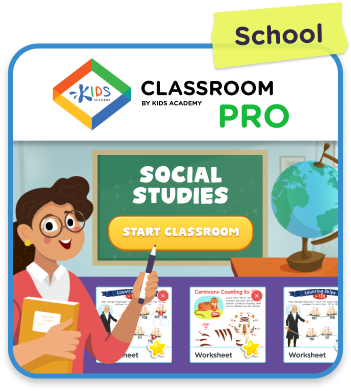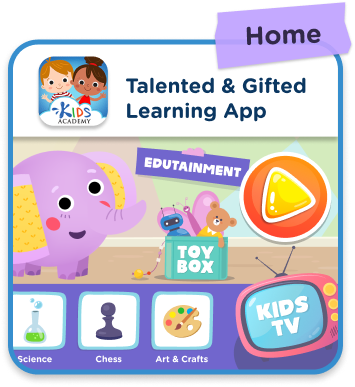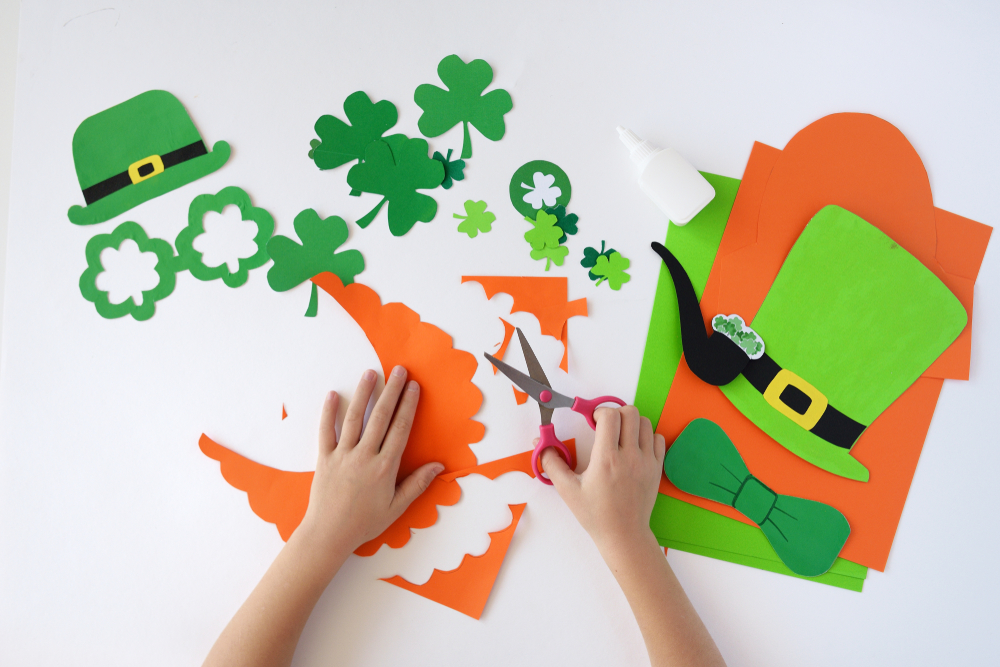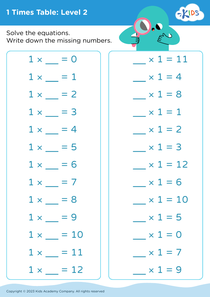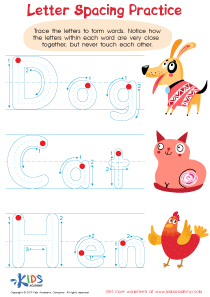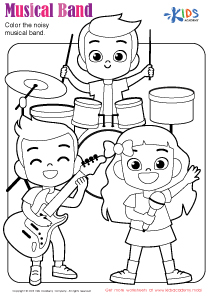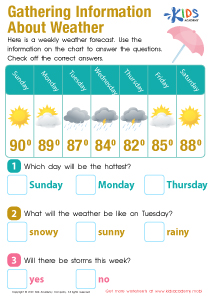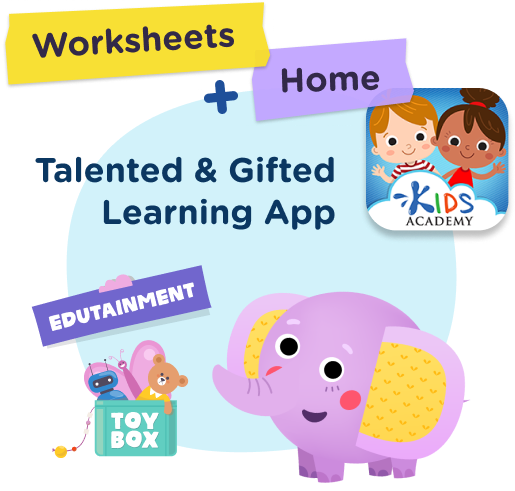Strategic thinking development Normal Worksheets for Ages 5-6
7 filtered results
-
From - To
Enhance your child's cognitive abilities with our "Strategic Thinking Development Worksheets" designed for ages 5-6. These engaging and colorful worksheets introduce fun activities that promote critical thinking, problem-solving, and planning skills. Tailored for young learners, each worksheet offers age-appropriate challenges that encourage children to think creatively and strategically. By completing these activities, kids will improve their decision-making abilities and learn to develop effective solutions. Perfect for home or preschool, these worksheets make learning enjoyable while laying a solid foundation for essential skills. Support your child's growth in strategic thinking with our carefully crafted resources today!
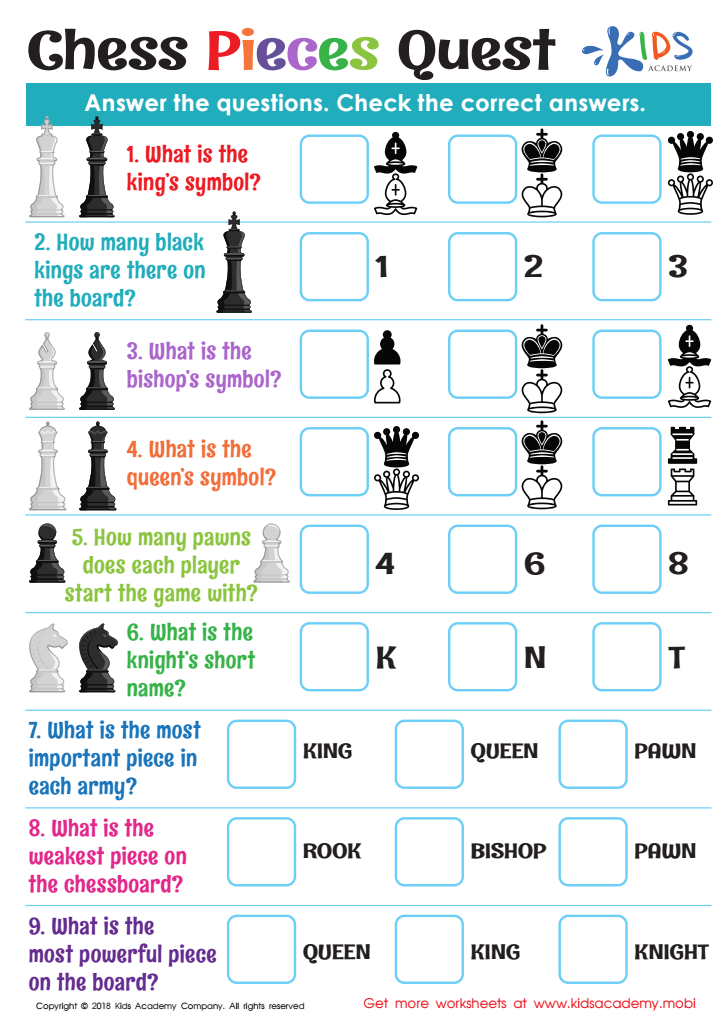

Chess Pieces Quest Worksheet
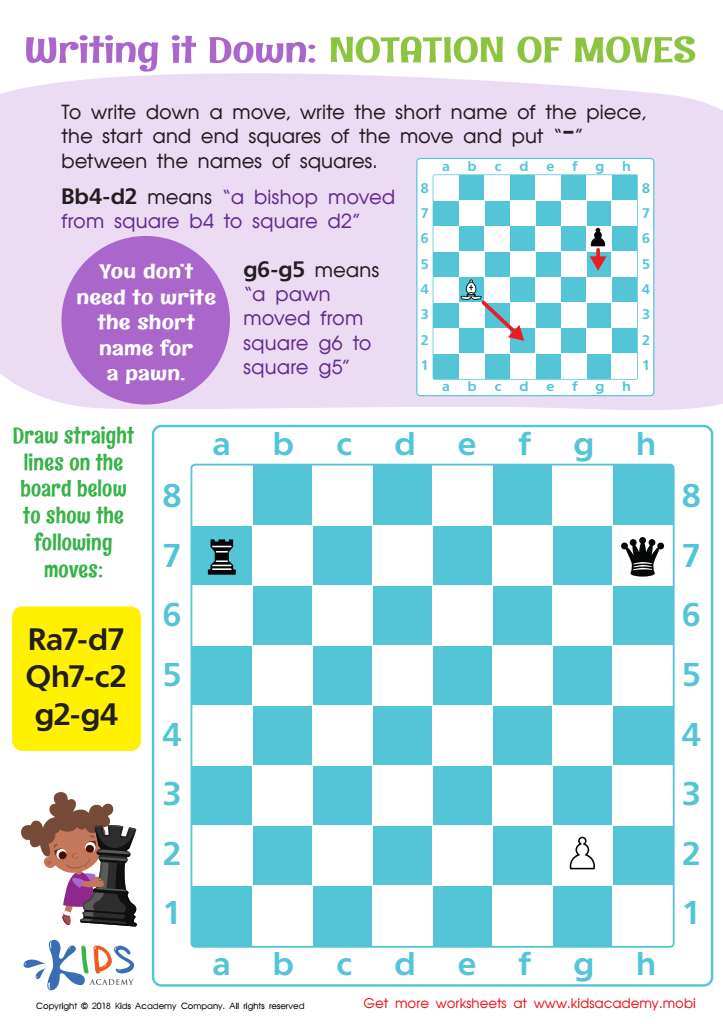

Notation of Moves Writing it Down Worksheet
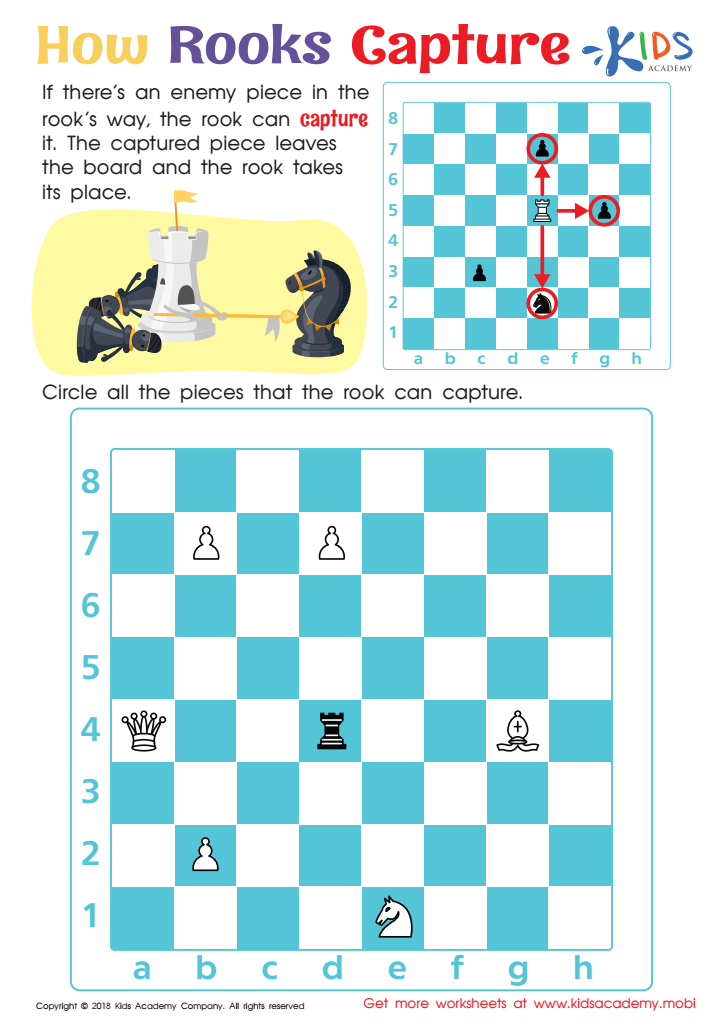

How Rooks Capture Worksheet
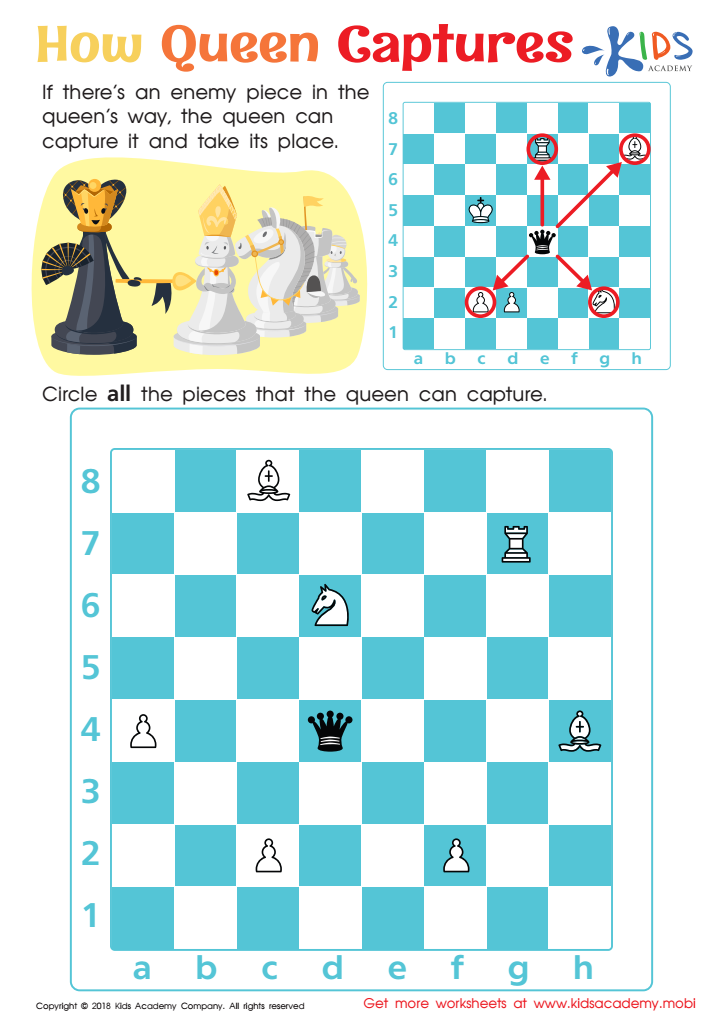

How Queen Captures Worksheet
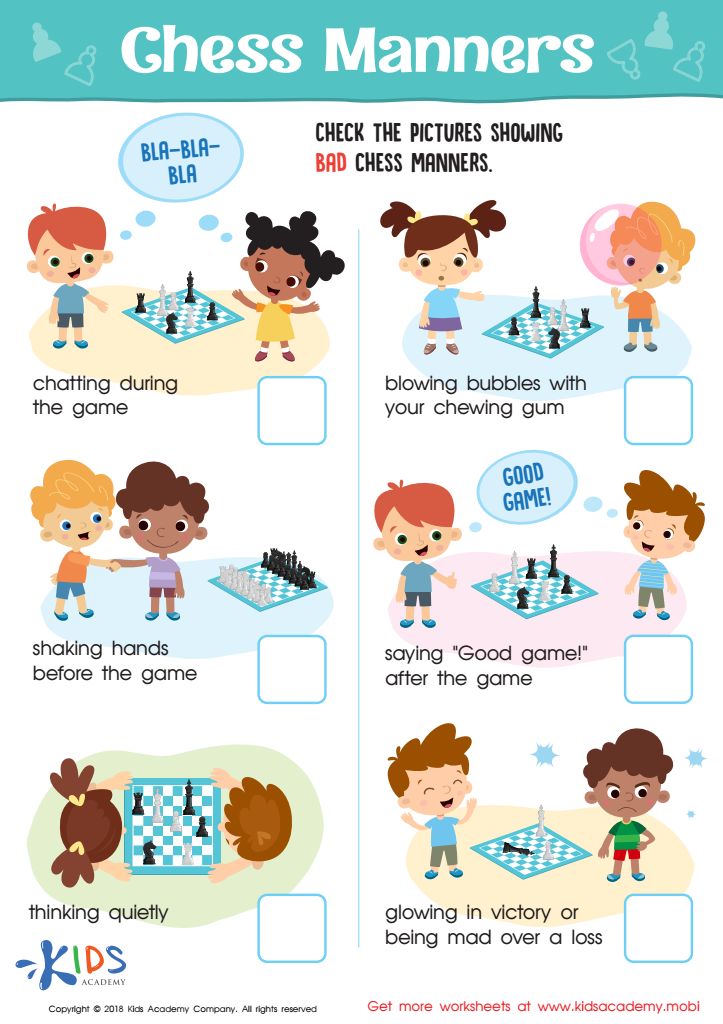

Chess Manners Worksheet
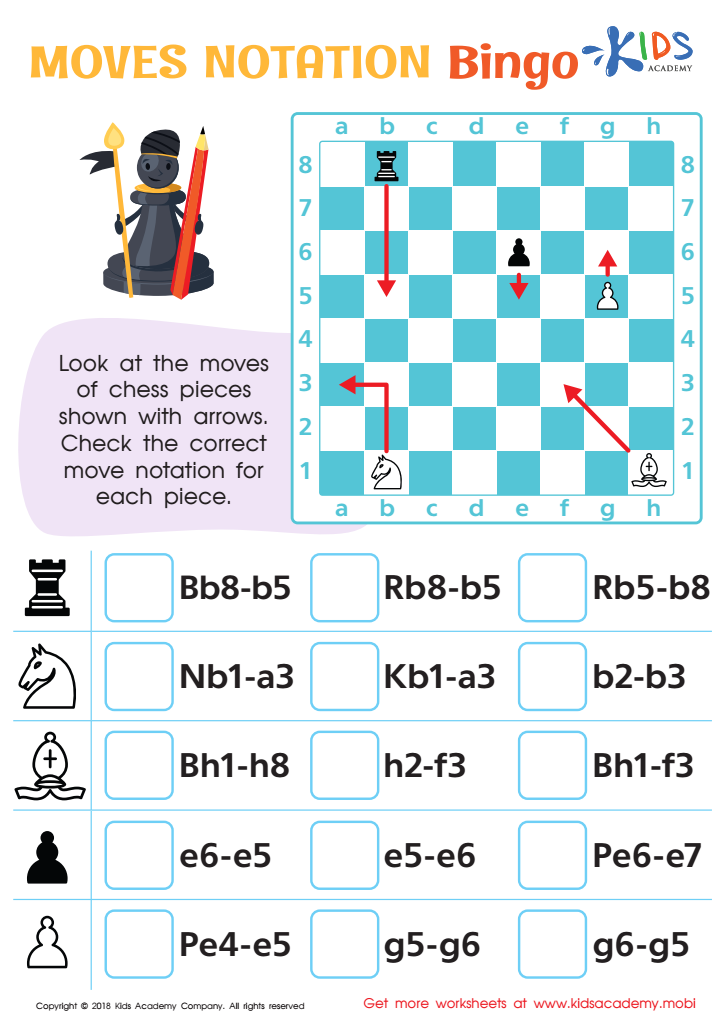

Moves Notation Bingo Worksheet
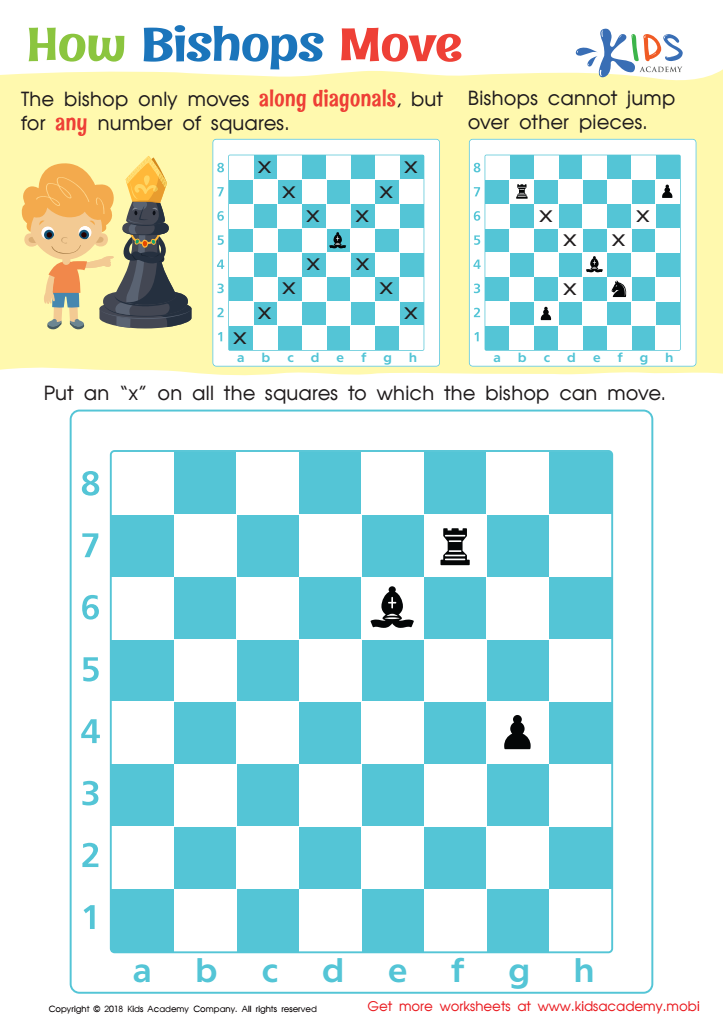

How Bishops Move Worksheet
Strategic thinking development in early childhood, particularly for ages 5-6, is crucial for several reasons. At this age, children are beginning to understand their surroundings and how to navigate social dynamics, problem-solving, and decision-making. By promoting strategic thinking, parents and teachers can foster critical skills that will underpin a child’s academic and social success.
First, strategic thinking enhances cognitive development. Children learn to assess situations, anticipate outcomes, and create plans, all of which are essential for problem-solving in everyday life. For example, when they engage in games that require planning or teamwork, they learn to analyze their options and make informed decisions.
Moreover, cultivating strategic thinking early encourages perseverance and resilience. Children learn to be adaptable when plans don’t work out, a skill essential for personal growth.
Furthermore, these skills are foundational for later academic achievements in math, reading comprehension, and science, where analytical thinking and strategic evaluation are pivotal. Encouraging parents and teachers to focus on developing these skills ensures that children are not only prepared for formal education but also equipped with the tools necessary for navigating a dynamic and complex world. Engaging and challenging children in constructive ways develops these crucial life skills holistically.
 Assign to My Students
Assign to My Students

